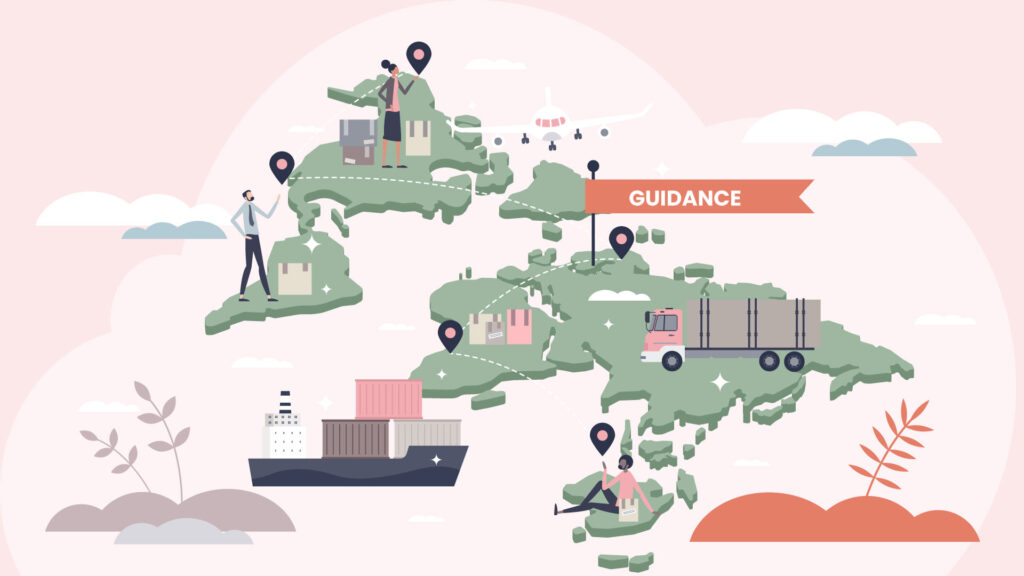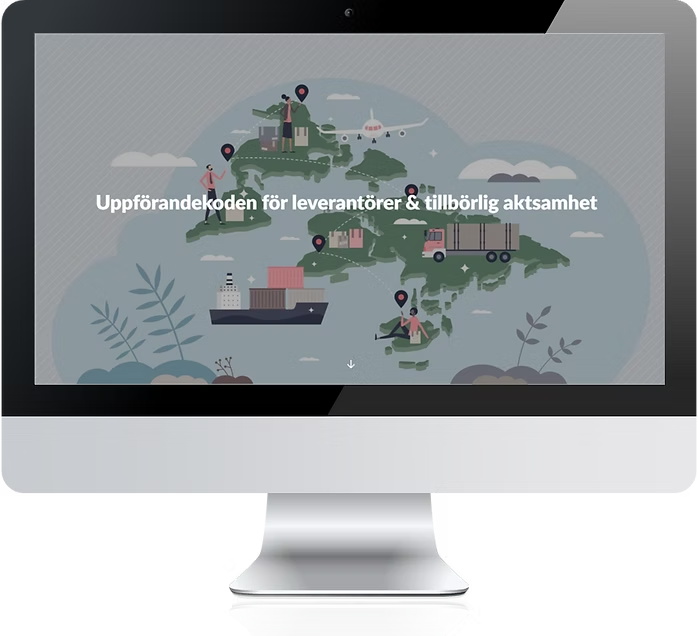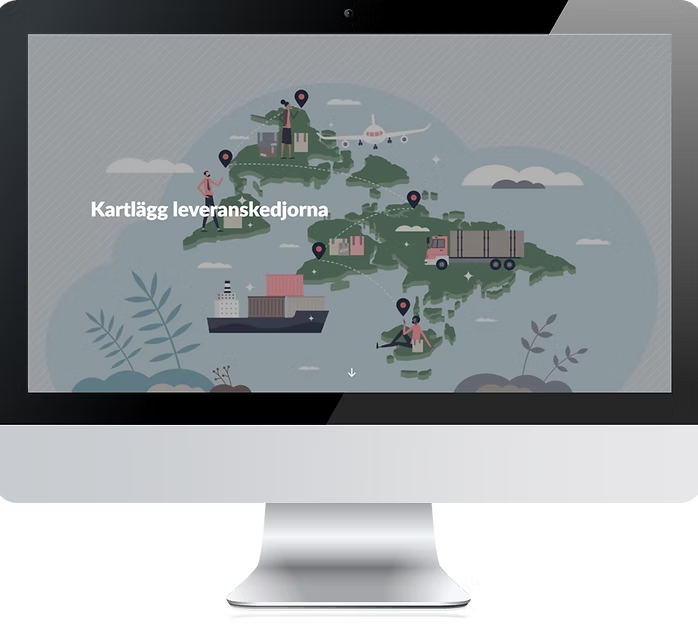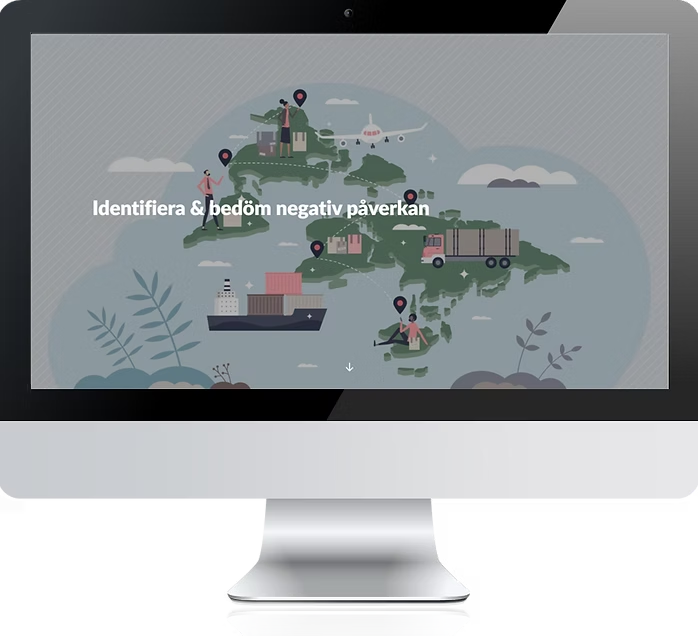Prepare procurement

We help you assess the need for the clause as well as identify and assess adverse impacts in the supply chain. We also go through the importance of mapping industry conditions and planning for monitoring.
Assessing the need for the clause
Before initiating a procurement, you need to assess the need for the contract clause.
If Swedish labour law is not applicable, you are in certain cases required to oblige the supplier to fulfill the contract in accordance with the ILO fundamental conventions, if this is “necessary.”
Labour law conditions in procurement regulations (in Swedish only)
ILO Fundamental Conventions
The International Labour Organization (ILO) is the UN’s specialized agency for employment and labour issues. The ILO Declaration on Fundamental Principles and Rights at Work commits member states to respect and promote these principles and rights, even if they have not ratified the fundamental conventions. There are ten fundamental conventions, covering five areas:
The core conventions are ten in number and concern five different areas:
- freedom of association and collective bargaining (ILO 87 and 98)
- forced labour (ILO 29 and 105)
- child labour (ILO 138 and 182)
- discrimination in employment (ILO 100 and 111)
- safe and healthy working environment (ILO 155 and ILO 187).
When conducting a procurement, you must therefore perform a necessity assessment. This assessment should be based on the risk of unfair working conditions within the supply chain. It is therefore not sufficient to only consider the location of final manufacturing. Products from Northern Europe, where the risks are generally lower, may contain components or raw materials from countries with higher risks. However, the necessity assessment is simplified by the fact that it is sufficient that there is something that indicates that the clause needs to be imposed for it to be “necessary.” This means that the clause more or less always needs to be imposed for international supply chains.
For the Swedish Regions’ prioritised purchasing categories, a national necessity assessment has already been performed, and the clause shall always be applied. For other categories, you can use the template available on the country risk page.
What about services?
If the contract relates to a service performed in Sweden, it may be relevant to set conditions regarding salary, vacation and working hours in accordance with a Swedish central collective agreement.
Labor law conditions in accordance with a collective agreement (in Swedish)
Many service contracts require the supplier to purchase goods from other countries. For example, crude oil for asphalt may come from Canada or Venezuela, textiles for laundry services from India or Bangladesh, and cleaning materials from China. In such procurements, it may be necessary to impose requirements both on labour law conditions in accordance with a collective agreement and on due diligence for sustainable supply chains.
Is it proportionate to use the requirement?
The necessity assessment must be made in every procurement and the requirement must be proportionate to what is being purchased, in accordance with the fundamental procurement principles.
Fundamental procurement principles (in Swedish)
In some cases, the subject matter of procurement may make it disproportionate to impose the requirement. This is particularly true for services where the good constitutes a small part, such as in the case of printing services for invoices, where environmental requirements on the paper may be more appropriate. The sustainability maturity of the industry may also affect whether the requirement is proportionate. You should ensure that small entities, which can offer flexible solutions, are not excluded. For example, locksmiths and nurseries may be self-employed or micro-enterprises. The risks in the manufacturing of locks in Asia and in the growing of plants in Southern Europe may be high at the same time as the sustainability maturity is low. Raise the issue in dialogue meetings, RFIs and referrals.
Dialogue meetings with suppliers (in Swedish)
Request for information (RFI) and external referral (in Swedish)
What can you do with less mature industries?
- Produce risk analyses that you share with suppliers.
- Flag that the requirements regarding due diligence will be imposed in the long term.
- Encourage suppliers to start building internal skills and capacity.
- Encourage suppliers to take note of this guidance.

Supplier Code of Conduct & Due Diligence
Do you want to learn about the Supplier Code of Conduct and due diligence?
Spend 15 minutes on our training.
Identifying and assessing adverse impacts
Identifying and assessing adverse impacts is important for understanding risks. It is also crucial for determining whether additional requirements are needed, such as for responsibly sourced minerals, and for defining what should be included in the transparency requirement.
The Swedish National Agency for Public Procurement offers a risk analysis service (in Swedish) that provides information on risks for high-risk products and tips on how to manage these risks.
You can also identify and assess adverse impacts in the supply chain yourself.
How to carry out a risk analysis
Step 1: Map the supply chain
The first step is to map the supply chain to understand its structure. This involves identifying the countries and, if possible, the regions where the work is performed, especially if it takes place in high-risk areas. For certain industries, such as food, textiles, and IT, a wealth of information is available, whereas transparency can be lower in other industries, such as pharmaceuticals. To gather this information, you can consult category managers and suppliers, as well as review audit reports or market analyses.
You can use the template we have developed for suppliers.
It is also important to understand the type of work being performed and the actors involved. Is it an industry with low wages and hazardous work processes? Is the workforce composed of migrant workers or seasonal workers? Is the supply chain complex and lacking transparency? This information is crucial for assessing geographic risks, sector risks, and product risks.
Step 2: Gather information from credible and independent sources
After mapping the origin and supply chain, the next step is to collect information on human rights, workers’ rights, environmental impact, and business ethics in the countries where the work is performed including final production, component manufacturing, and raw materials. To do this, you should use credible and independent sources such as international organisations, government agencies, non-governmental organisations, and global trade unions.
Step 3: Identify and assess adverse impacts
The final step is to identify and assess adverse impacts in the supply chain based on the information gathered in Steps 1 and 2. Often, multiple risks are identified, requiring prioritisation based on likelihood and severity. You assess severity based on the scale, scope and irremediable character of the adverse impact:
- Scale refers to the gravity of the adverse impact.
- Scope concerns the reach of the impact, for example the number of individuals that are or will be affected or the extent of environmental damage.
- Irremediable character means any limits on the ability to restore the individuals or environment affected to a situation equivalent to their situation before the adverse impact.
Severity is not an absolute concept—it is relative to other identified adverse impacts in each specific case. Particularly vulnerable groups are often the most affected. Therefore, special attention should be given to these groups. If a potential human rights impact has a low likelihood but high severity, the severity should be the deciding factor. This means that if an adverse impact could result in loss of life, it should be prioritised even if it is less likely to occur.
If you use the template we have developed for suppliers, you can share the risk analysis with them, assisting them in their due diligence.

Map Your Supply Chains
Do you want to learn how to map your supply chains?
Spend 15 minutes on our training.

Identify & Assess Adverse Impacts
Do you want to learn how to identify and assess adverse impacts?
Spend 20 minutes on our training.
Mapping industry conditions
The possibilities for ensuring sustainability in supply chains vary between industries. Structural issues, such as a lack of traceability, can make this work more complex. In such cases, collaboration through industry initiatives and certifications can be a solution. Therefore, engage in early dialogue with suppliers about industry challenges and solutions.
Early dialogue (in Swedish)
Industry initiatives and certifications
Investigate whether there are industry initiatives working towards better conditions in the supply chain. Such initiatives can save both time and resources and contribute to industry-wide improvements.
In some cases, you can also refer to a certification in the procurement documents.
Rules for the use of certifications (in Swedish)
Use of certifcations (in Swedish)
There are many different certifications and it can be difficult to know what they mean. Typically, a third party verifies that a product or service meets the certification’s criteria, but certifications do not always cover the entire supply chain. In complex supply chains, several production tiers may be missing, and some certifications lack independent party verification. Despite this, certifications can be a good tool.
Examples of certifications can be found in the Swedish National Agency for Public Procurement’s risk analysis service.
Planning for monitoring
The supplier shall participate in and cooperate with you in the monitoring of the contract clause, through dialogue, self-assessment, supply chain disclosures, and audits. Plan the monitoring already in the preparation phase, even if the details are set later. Ensure that you have the necessary resources and expertise to carry out monitoring effectively.
Procurement categories with particularly high risks are jointly monitored by the National Secretariat for Sustainable Public Procurement. The results are published on our website. You can also contact the secretariat for information about which suppliers will be monitored during the year.
Buyers can also use Adda Central Purchasing Body’s framework agreement for audits (in Swedish).
Adda Central Purchasing Body’s framework agreement Audit and Advisory Services
Guidance for purchasers on using the contract clause
Prepare procurement
We help you assess the need for the clause as well as identify and assess adverse impacts in the supply chain.
Conduct procurement
We help you choose between the basic level and the advanced level and assist in supplementing and finalising the clause, for example regarding transparency in the supply chain.
Manage contract
We help you prepare suppliers prior to contract start, to plan and carry out monitoring, and manage deviations.